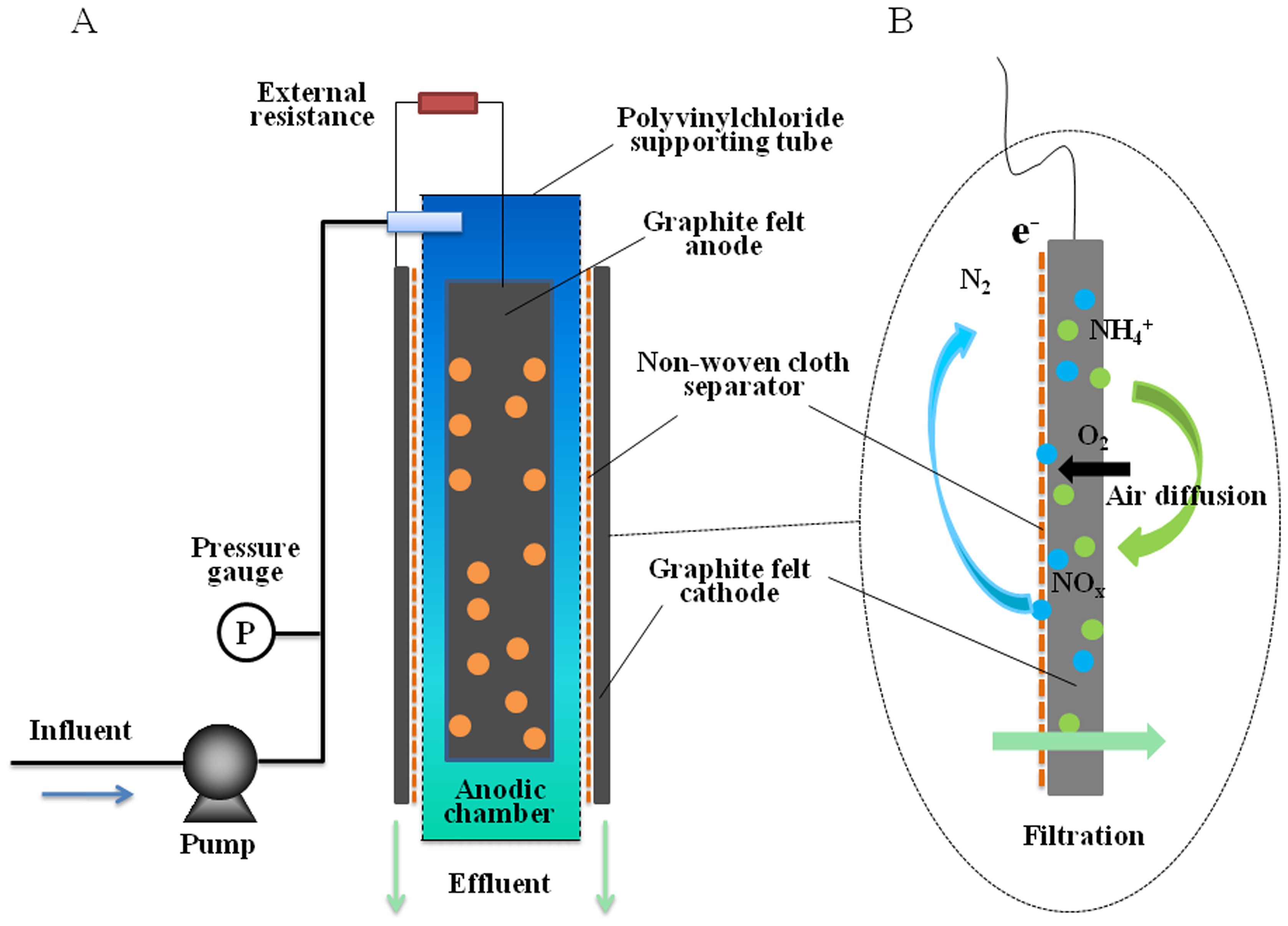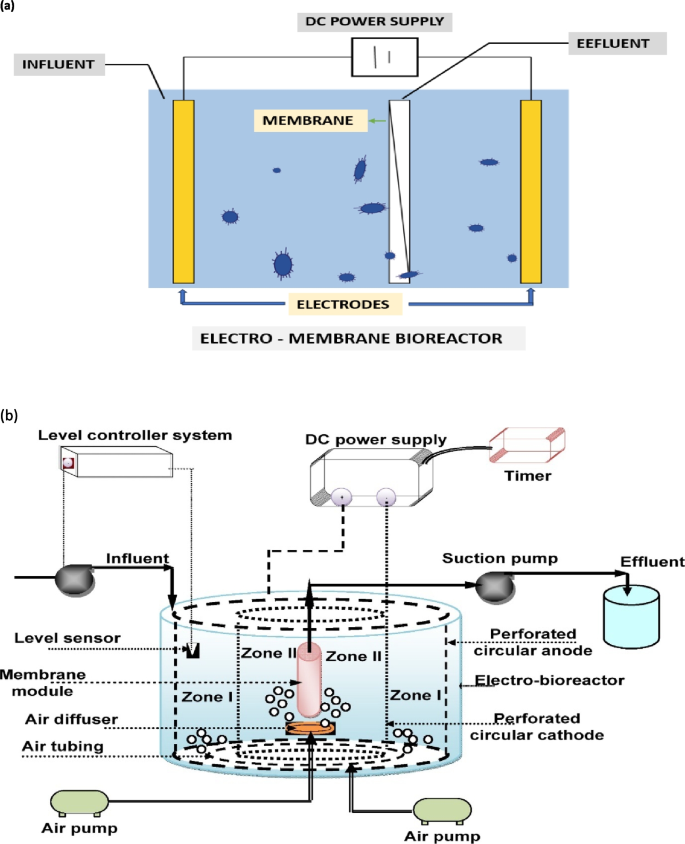The Advantages of Using a Membrane Bioreactor for Efficient Water Purification
The Advantages of Using a Membrane Bioreactor for Efficient Water Purification
Blog Article
Exactly How Membrane Layer Bioreactors Are Revolutionizing Water Filtration Solutions
The introduction of membrane bioreactors (MBRs) represents a substantial innovation in the field of water filtration, merging organic treatment procedures with sophisticated membrane layer filtration technologies. This assimilation not only improves the high quality of dealt with effluent however additionally addresses city area restraints, making MBRs particularly suitable for largely booming locations. As international water shortage heightens, the role of MBRs in helping with drinkable water reuse and lasting water management ends up being progressively vital. Yet, the ramifications of this technology extend beyond performance-- what possibilities and challenges lie in advance for its widespread implementation?
Overview of Membrane Layer Bioreactors
Membrane layer bioreactors (MBRs) represent a substantial advancement in water purification innovation, as they combine organic treatment processes with membrane purification. This assimilation enhances the effectiveness of wastewater therapy by utilizing microbes to weaken organic contaminants while concurrently employing semi-permeable membrane layers to separate treated water from suspended solids and virus.
The MBR system usually includes a biological reactor where the microbial population metabolizes pollutants, followed by a membrane layer filtering unit that keeps biomass and permits only clean water to pass through. This twin capability results in higher effluent high quality compared to standard therapy methods. MBRs can be run in both batch and continual circulation modes, using versatility in style and application.
They additionally allow the healing of water for reuse, thus contributing to water sustainability initiatives. In general, MBRs are at the forefront of improving water therapy performance and top quality, showcasing the capacity for ingenious remedies in environmental management.
Benefits of MBR Innovation
The assimilation of organic treatment with membrane layer filtering supplies many benefits for water purification procedures. One of the key advantages of Membrane Bioreactor (MBR) modern technology is its capability to effectively get rid of both organic and inorganic impurities, resulting in top notch effluent. The membranes work as a physical obstacle, avoiding put on hold solids and pathogens from going through, which boosts the total safety and integrity of cured water.
Furthermore, MBR systems need a smaller sized impact contrasted to conventional therapy methods, permitting more reliable area utilization. This small layout is especially useful in urban setups where land is limited. MBRs additionally show operational flexibility, suiting differing influent top qualities and flow rates without substantial performance deterioration.
Furthermore, the process offers boosted nutrient elimination abilities, specifically for nitrogen and phosphorus, which are crucial for stopping eutrophication in obtaining waters. The decreased sludge production associated with MBR modern technology additionally converts to lower disposal prices, making it a cost-efficient service in the future - Membrane Bioreactor. In general, the advantages of MBR modern technology setting it as a leading option for innovative and sustainable water filtration systems, attending to both ecological and economic issues
Applications in Water Purification
Applications of Membrane Layer Bioreactor (MBR) technology in water purification are varied and impactful, attending to different therapy needs across numerous fields. MBRs efficiently integrate organic treatment procedures with membrane layer filtration, making them perfect for community wastewater therapy, industrial effluent management, and even drinkable water reuse campaigns.
In local setups, MBRs are increasingly employed to improve the quality of dealt with wastewater, enabling compliance with rigid discharge regulations and facilitating the recycling of water for watering and non-potable uses. Their compact design likewise makes them ideal for urban settings where area is restricted.
Industrially, MBR technology is used to deal with process water and wastewater, particularly in fields such as food and beverage, drugs, and textiles. By properly getting rid of contaminants and suspended solids, MBRs aid sectors reduce environmental effects while recuperating valuable sources from wastewater streams.
Additionally, MBRs are obtaining traction in decentralized water therapy applications, where small-scale systems can be released in remote locations or establishing regions. This flexibility allows neighborhoods to accomplish lasting water anonymous monitoring options, boosting accessibility to clean water while decreasing dependence on conventional treatment methods.
Situation Researches and Success Stories

In one more instance, a textile production facility in Bangladesh embraced MBR technology to address its wastewater difficulties. The system decreased chemical oxygen need (COD) degrees from 1,200 mg/L to much less than 100 mg/L, hence fulfilling regulatory requirements and substantially minimizing environmental effect.
The College of Cape Town's MBR installation has shown reliable in dealing with greywater for non-potable reuse on campus. This job not only preserves potable water however additionally works as an educational design for lasting techniques.
Furthermore, a seafood handling plant in Norway made use of MBR innovation to treat effluents consisting of high levels of raw material, accomplishing over 90% contaminant removal. These study emphasize MBR technology's adaptability and its important function in boosting water quality across diverse applications.
Future of Water Treatment Solutions
As international water scarcity and air pollution challenges intensify, ingenious water treatment options are ending up being significantly vital to make certain lasting accessibility to clean water. The future of water therapy depends on the assimilation of advanced modern technologies that boost the efficiency and performance of filtration procedures. Membrane layer bioreactors (MBRs) go to the forefront of this advancement, integrating organic treatment with membrane layer filtering to create top notch effluent ideal for numerous applications.

Emerging patterns such as resource recovery from wastewater, consisting of nutrients and power, will certainly additionally transform treatment facilities into environment-friendly centers. Additionally, developments in nanotechnology and membrane layer products guarantee improved performance and longevity of filtering systems.

Verdict
In final thought, membrane bioreactors represent a significant development in water filtration technologies, successfully incorporating organic therapy with innovative membrane filtration. The many benefits, consisting of enhanced effluent top quality and minimized spatial demands, make MBRs look at here especially appropriate for urban applications. Their function in drinkable water reuse and lasting water management highlights their significance in dealing with global water deficiency challenges. Proceeded r & d will additionally enhance the efficacy and adoption of MBR modern technology, making sure a resilient future for water therapy remedies.
The introduction of membrane layer bioreactors (MBRs) stands for a considerable innovation in the field of water purification, merging organic treatment procedures with innovative membrane layer filtration modern technologies. As global water deficiency intensifies, the role visit this website of MBRs in promoting potable water reuse and sustainable water administration comes to be significantly essential. They additionally make it possible for the recuperation of water for reuse, hence adding to water sustainability initiatives.As worldwide water scarcity and pollution difficulties heighten, innovative water treatment solutions are ending up being significantly important to make certain sustainable accessibility to clean water. Their duty in potable water reuse and lasting water administration highlights their value in dealing with global water shortage difficulties.
Report this page